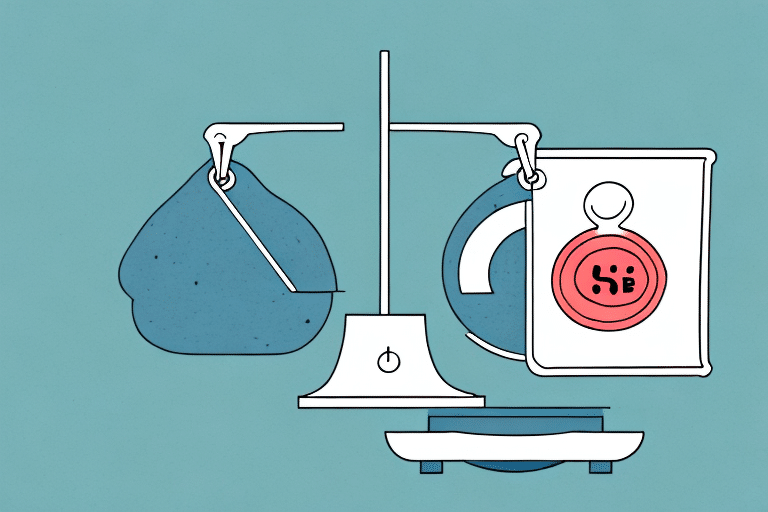Understanding USPS Insurance: Costs, Coverage, and Comparisons
Shipping a package with the United States Postal Service (USPS) often involves decisions about insurance. Whether you're considering purchasing insurance for the first time or reevaluating your current shipping practices, understanding the costs, coverage limitations, and alternatives is essential. This comprehensive guide delves into USPS insurance costs, policy details, comparisons with private insurance, and tips for maximizing your shipping security.
Table of Contents
- USPS Insurance Policy Overview
- Cost of USPS Insurance and Coverage Limits
- USPS Insurance vs. Private Insurance
- Eligible Items for USPS Insurance
- Navigating the Claims Process
- Tips for Saving on USPS Insurance Costs
- Alternatives to USPS Insurance
USPS Insurance Policy Overview
Before exploring the costs associated with USPS insurance, it's crucial to understand what the policy covers. USPS offers insurance for both domestic and international packages with a maximum coverage limit of $5,000. This coverage is typically sufficient for most standard packages. However, for high-value items, additional private insurance may be advisable.
What Does USPS Insurance Cover?
- Loss: Compensation if your package is lost during transit.
- Damage: Coverage for items damaged in the shipping process.
- Missing Contents: Reimbursement if any contents are missing upon delivery.
Insurance costs are not included in the standard shipping fees and are calculated based on the declared value of the package. It's important to adhere to USPS packing guidelines to ensure your insurance claims are honored.
Exclusions and Limitations
USPS insurance does not cover the following items:
- Cash, jewelry, and precious metals.
- Perishable goods.
- Hazardous materials.
Additionally, international shipments may have specific restrictions depending on the destination country's regulations. Always consult the USPS International Shipping Services for detailed information.
Cost of USPS Insurance and Coverage Limits
The cost of USPS insurance varies based on the declared value of the item, shipping method, and destination. Here's a breakdown of typical costs:
| Declared Value | Insurance Cost |
|---|---|
| Up to $50 | $2.75 |
| $50.01 - $100 | $3.90 |
| $100.01 - $200 | $4.85 |
| $200.01 - $300 | $5.75 |
For packages valued over $5,000, USPS insurance is not available, necessitating the purchase of private insurance.
Factors Influencing Insurance Costs
- Declared Value: Higher declared values increase insurance costs.
- Shipping Method: Different USPS services have varying insurance rates.
- Destination: International shipments may incur different fees.
For the most accurate and up-to-date pricing, refer to the USPS Insurance Pricing page.
USPS Insurance vs. Private Insurance: Which is Better?
When shipping valuable items, deciding between USPS insurance and private insurance is critical. Each option has its advantages and considerations:
Advantages of USPS Insurance
- Cost-Effective: Generally lower premiums compared to private insurance.
- Convenience: Easily add insurance during the shipping process.
- Integration: Seamless with USPS tracking and services.
Advantages of Private Insurance
- Higher Coverage Limits: Coverage beyond the $5,000 ceiling.
- Comprehensive Protection: Often includes broader coverage options.
- Faster Claims Processing: More efficient claims handling.
For high-value or sensitive items, private insurance may offer better protection despite higher costs. It's advisable to compare the terms, coverage limits, and costs of both options before deciding.
Ease of Filing a Claim
USPS has been criticized for a cumbersome claims process. Private insurers typically offer more streamlined and user-friendly claims procedures, which can be crucial in time-sensitive situations.
Reputation and Reliability
Selecting a reputable insurance provider is vital. While USPS has a longstanding history, private insurers vary in reliability. Conducting thorough research and reading customer reviews can help in choosing a trustworthy provider.
Eligible Items for USPS Insurance
Understanding what can and cannot be insured by USPS is essential to avoid denied claims and additional costs.
Permitted Items
- Clothing and textiles
- Books and media
- Household items
- Electronics
Prohibited and Restricted Items
USPS prohibits the shipment of certain items, which are also ineligible for insurance:
- Hazardous Materials: Including flammable liquids and explosives.
- Weapons: Firearms and ammunition.
- Illegal Substances: Drugs and other contraband.
Before shipping, consult the USPS Hazardous Materials Guidelines to ensure compliance.
Navigating the Claims Process for USPS Insurance
If your package is lost or damaged, filing a claim promptly is crucial for reimbursement.
Filing a Claim
- Timeframe: Claims must typically be filed within 60 days of mailing.
- Documentation: Provide tracking numbers, proof of value, and supporting photos or receipts.
- Submission: Claims can be filed online via the USPS Claims Center or at a local post office.
Processing Time
The claims process can take several weeks, depending on the complexity of the case and the completeness of the submitted documentation. Patience and thoroughness can expedite the resolution.
Common Issues and Solutions
- Incomplete Documentation: Ensure all required documents are provided to prevent delays.
- Ineligible Items: Shipping prohibited items will result in denied claims.
- Undervaluing Items: Accurately declare the value to receive appropriate compensation.
Tips for Saving on USPS Insurance Costs
Maximizing your shipping budget while ensuring package safety is achievable with strategic planning.
Open a USPS Business Account
Business accounts often qualify for discounted shipping rates and insurance costs, making them ideal for frequent shippers.
Self-Insure
By setting aside funds to cover potential losses, you can avoid recurring insurance fees. This approach requires careful financial planning and risk assessment.
Secure Packaging
Proper packaging minimizes the risk of damage. Use sturdy boxes, ample padding, and secure sealing methods to protect your items during transit.
Utilize USPS Online Tools
Shipping online through the USPS website or mobile app can reduce insurance costs. Digital shipping solutions often offer discounted rates and the convenience of managing shipments from anywhere.
Alternatives to USPS Insurance
Exploring other shipping insurance options can provide additional security and peace of mind.
Private Courier Services
Companies like FedEx, UPS, and DHL offer various insurance options with higher coverage limits and specialized services for valuable items.
Specialized Shipping Services
For high-value items such as jewelry or artwork, specialized shipping services provide enhanced security measures, including GPS tracking and secure handling protocols.
Self-Insurance Strategies
Declaring the full value of your items and employing robust packaging methods can sometimes negate the need for additional insurance, though this approach carries inherent risks.
Conclusion
Choosing the right insurance for your USPS shipments involves balancing cost, coverage, and convenience. While USPS insurance offers a basic level of protection suitable for many packages, high-value items may benefit from the comprehensive coverage provided by private insurers. By understanding the nuances of USPS insurance policies, costs, and alternatives, you can make informed decisions that safeguard your shipments effectively.
For more detailed information, always refer to the official USPS website or consult with a shipping professional.






















